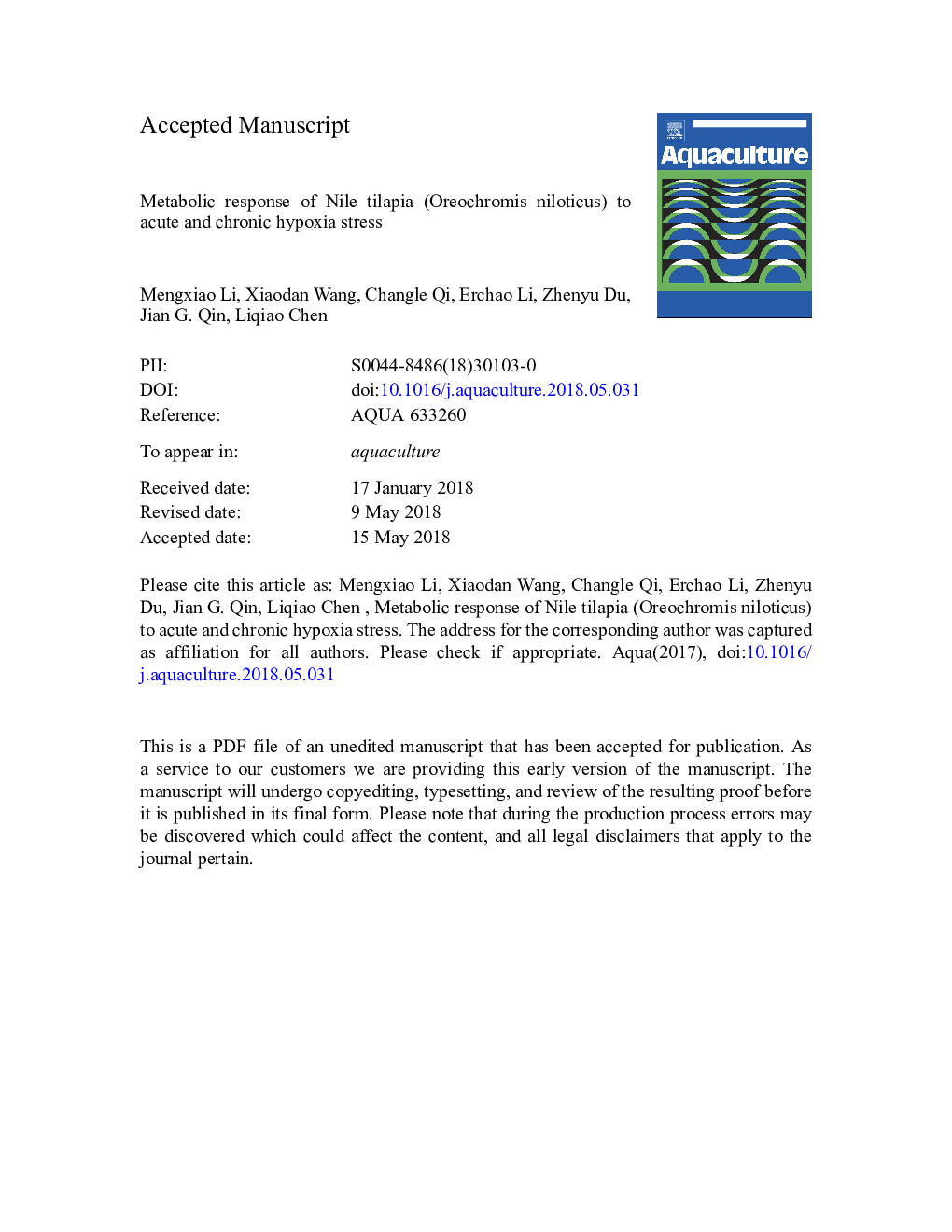| کد مقاله | کد نشریه | سال انتشار | مقاله انگلیسی | نسخه تمام متن |
|---|---|---|---|---|
| 8493064 | 1552793 | 2018 | 35 صفحه PDF | دانلود رایگان |
عنوان انگلیسی مقاله ISI
Metabolic response of Nile tilapia (Oreochromis niloticus) to acute and chronic hypoxia stress
دانلود مقاله + سفارش ترجمه
دانلود مقاله ISI انگلیسی
رایگان برای ایرانیان
کلمات کلیدی
موضوعات مرتبط
علوم زیستی و بیوفناوری
علوم کشاورزی و بیولوژیک
علوم آبزیان
پیش نمایش صفحه اول مقاله

چکیده انگلیسی
Hypoxia is a critical issue in aquaculture especially in intensive aquaculture systems. Acute hypoxia stress with dissolved oxygen (DO) 0.7â¯Â±â¯0.1â¯mg/L for 6â¯h and chronic hypoxia stress with DO 1.1â¯Â±â¯0.1â¯mg/L for 4â¯weeks were used to investigate the response of nutritional metabolic pathways in Nile tilapia Oreochromis niloticus. Fish in the acute and chronic experiments had different adaptive mechanisms. Upon acute hypoxia stress, the contents of liver glycogen and muscle glycogen were significantly lower, but there was no significant difference in triglycerides (TG). The lactate dehydrogenase (LDH) activities increased after exposure to acute hypoxia stress. The mRNA expression of genes involved in glycolysis and glycogenolysis was significantly up-regulated by acute hypoxia stress. However, the response of fish to long-term hypoxia stress was different from acute hypoxia. Compared with the normoxia treatment, the crude fat in fish decreased in the hypoxia group and TG in the liver and muscle were significantly lower. Beta oxidation of the liver was enhanced in the hypoxia group, while the hepatic glycogen content increased in the hypoxia group. Transcriptomic analysis showed that the expression of genes related to carbohydrate synthesis and lipolysis increased in the hypoxia group, while genes related to carbohydrate catabolism and fat synthesis showed the opposite. This study indicates that fish could utilize carbohydrate as a main energy source during acute hypoxia stress, and metabolize more lipid during long-term hypoxia stress. A high carbohydrate content in the diet may help reduce negative effects from acute hypoxia stress, and an appropriate increase of fat content in the diet may benefit fish growth in a hypoxia environment, e.g., in high-density aquaculture ponds.
ناشر
Database: Elsevier - ScienceDirect (ساینس دایرکت)
Journal: Aquaculture - Volume 495, 1 October 2018, Pages 187-195
Journal: Aquaculture - Volume 495, 1 October 2018, Pages 187-195
نویسندگان
Mengxiao Li, Xiaodan Wang, Changle Qi, Erchao Li, Zhenyu Du, Jian G. Qin, Liqiao Chen,